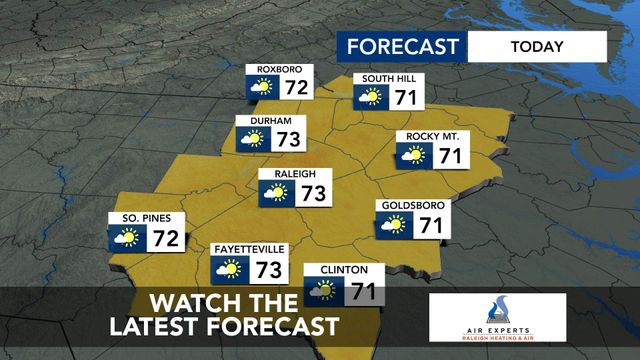How suppliers determine the price of sod
This story was written for our sponsor, North Carolina Sod Producers Association. This promotion is supported in part by the N.C. Department of Agriculture and Consumer Services Specialty Crop Block Grant Program.
The real estate market in the Triangle area is one of the most competitive in the entire country. For sellers who play their cards right and make strategic improvements to their home, they could stand to net well-above asking price.
One of the simplest ways to increase your home’s curb appeal? Improve your lawn.
A sodded lawn should immediately increase the value of your property, but the cost of the sod needed to accomplish that depends on many variables.
Your sod supplier, whether it’s a turf farm, retail store, landscape contractor or your favorite lawn care service, must consider several factors in determining the sales price.
"Homeowners eagerly invest in their biggest asset, their home. Now more than ever many people are working from home or spending more time at home. New sod adds value immediately and enhances your quality of life," said DArt Bruneau, professor emeritus at North Carolina State University.
Here are some of the variables that go into determining the cost of sod for your lawn.
Grass type and quality
You may not realize it, but the grass you select for your lawn can affect the price.
Many of the turfgrasses grown as sod cannot be seeded and can only be vegetatively planted. Some of the sod grasses that are used for home lawns are the same as those used on professional and school athletic fields or golf courses. Some have been developed and/or tested at universities such as N.C. State University to ensure that they perform well specifically under North Carolina conditions.
Other specialty grass varieties may require the turf farm to pay royalties to the developers or plant breeders who develop these improved grasses. In addition, sod farms are charged a fee when they choose to have their grasses certified by the North Carolina Crop Improvement Association.
This non-profit educational and service organization conducts inspections that ensure the sod sold is of the highest quality. Enhanced quality and added performance often compensates for the added cost.
With the state's diverse climate from the mountains to the coast, nearly all major turfgrasses can be grown somewhere in North Carolina — and members of the N.C. Sod Producers Association can help you select the turfgrasses that are adapted and will grow best in your situation. Grass options in North Carolina include varieties that are cool season or warm season.
Some turfgrasses take longer to mature at the sod farm than others, which can in turn increase costs. Keep in mind that some of these slower establishing grasses can possess attributes that are not available in quicker growing turfgrasses and often justify the added cost.
Like any commodity, sod costs are related to supply and demand. A boom in home building, for example, could affect supply — which is especially relevant in the Triangle area due to steady growth.
The N.C. Sod Producers Association and N.C. State University are good resources to help you find the right turf grass for your needs and how to care for it once installed.
Size of area
Determining the size of the area can save you money and prevent waste by making sure you order the right amount of sod.
Calculating the area of your lawn is as simple as using Google Earth, which is recommended by the N.C. Sod Producers Association.
Pallets of sod typically contain approximately 500 square feet of sod. Order about five to ten percent more sod to accommodate any miscalculations, handling errors or waste. A member of the N.C. Sod Producers Association can assist you in determining the amount of sod you need.
Delivery
The size and the terrain of your landscape can impact the sod installation. While some yards can be easily done in a weekend, for larger areas and more complex terrains, you may want to consider hiring a professional installer.
Whether you hire a professional installer or do it yourself, there are several items that should be considered.
- Terrain: Just like a steep roof, a steep yard is harder to work with than flat land. Oftentimes, special equipment is needed to install sod. That equipment may not be adapted to use on sloped land or small areas, and then installation must be done by hand, which can add to the cost.
- Obstacles: When mowing, we have to work around patios, trees, rocks, flowers and other elements in our backyard. These obstacles also make it more difficult to install sod and may increase cost.
If you do use a professional installer, labor cost will be based on the size of your landscape, the terrain and the obstacles to be encountered.
This story was written for our sponsor, North Carolina Sod Producers Association. This promotion is supported in part by the N.C. Department of Agriculture and Consumer Services Specialty Crop Block Grant Program.











